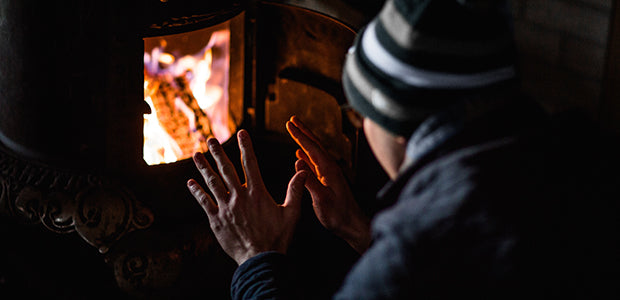As winter approaches, the drop in temperature often leads to dehydration and tightness in the skin, which no longer fulfills its barrier role properly. To maintain its radiance and elasticity, the epidermis needs special care.
As a mechanical, physical and immunological barrier, the skin is our main protection against the environment. When the cold sets in, to maintain body temperature at around 37°C, the thin layer of tissue that makes up the epidermis fights against heat loss through vasoconstriction, making the extremities (feet, hands and face) more fragile. Sebum production tends to decline, and the skin's hydrolipidic film is altered. Protective factors no longer play their barrier role. Cold also reduces the enzymatic activity that breaks down "dead" cells, leading to an accumulation of dry cells.
In addition, heating, the confined air of apartments and offices, and transitions from hot to cold actively contribute to this dehydration, which leads to tightness and tingling, and sometimes even burning sensations. Skin becomes rough, itchy and scaly.
With no sebaceous glands, lips are particularly reactive to temperature changes. They quickly become damaged, dry and chapped. The same applies to the hands, the part of the body most exposed to the cold, and whose extremely thin and fragile skin is characterized by a low synthesis of natural moisturizing factors. As a result, patients complain of painful cracking.
Chilblains, frostbite and cracks
Skin exposure to cold, humidity and wind can also lead to more serious dermatological problems. Starting with cold urticaria, an allergic reaction manifested by redness, swelling and itching. If the cold is compounded by humidity, frostbite can occur. Inflammatory red patches appear, most often on the extremities, followed by edema, and pain when the skin warms up. Frostbite can also occur through crystallization of water in skin cells, combined with impaired blood circulation. The result is necrosis of the tissue concerned, which in the most serious cases can lead to amputation. The skin then becomes white and painful.
To combat the disastrous effects of cold on the epidermis, and prevent or repair chapping and cracking, the main remedy is hydration. Regular application of protective emulsions is the only way to preserve the epidermis' water and fat balance.
Moisturize and protect
Cold-cream, a protective, lipid-replenishing cosmetic cerate, is particularly recommended for infants. The paraffin-, cetyl palmitate-, beeswax- and water-based moisturizing film it deposits on the epidermis creates a veritable protective filter separating it from the cold. Today, however, there are much lighter, highly protective emulsions: moisturizing creams. Highly dosed with softening active ingredients (allantoin, glycerin), emollients (mallow, marshmallow) and moisturizers like urea, they are used daily to restore suppleness, softness and velvety texture to the epidermis.
To protect the lips, we recommend a nourishing and protective lip balm stick with vitamins A and E and nourishing agents (cocoa butter, healing shea butter, soothing thermal spring water). Chapped lips can be the sign of a lack of essential fatty acids, found in certain oils (fish, evening primrose, spirulina, borage, sunflower, olive, etc.), which restore suppleness and elasticity to the skin. Avoid overly salty foods, as salt has a dehydrating effect on the lips. Chapped lips can also be the symptom of a lack of vitamin B2 (riboflavin) which, like other B vitamins, cannot be stored by the body. It must therefore be supplied through the diet or dietary supplements.
Gentle cleansing
For facial cleansing, women are advised to use cleansing milks and creams rather than water-rinse products, and not to exfoliate more than once a week. To get rid of the unsightly redness for which the cold may be responsible, we recommend a specific skin care product which, by isolating the skin, soothes and decongests it by stimulating microcirculation.
In the mountains, external aggressions are numerous: wind, cold, altitude, temperature differences, not to mention sun and reflection. All these factors contribute to skin dryness and ageing. A standard day cream may suffice, but if the skin is sensitive or irritable, it's best to opt for a specific product. A mask enriched with natural active ingredients (horse chestnut, witch hazel) can revive skin cells and restore color.
Source : QuotiPharm.com


